Guide for student exchange in Finland
Finally! You received that acceptance letter you have been longing for months! Here is everything you should know before setting off on a student exchange in Finland from a fellow Australian who has been in those same shoes.

Students celebrating Vappu (May Day). Photo: Visit Finland
First things first
You may be asking yourself do I need a visa to study as an exchange student in Finland? The answer put simply is maybe. Australian nationals must apply for a residence permit if your studies in Finland take longer than 90 days. The Finnish Immigration Service has written a comprehensive guide on how to apply for a residence permit(Link to another website.) as a student. Please note, after submitting your application online you will need to attend an appointment at the Embassy of Finland in Canberra to verify your identity.
You can schedule an appointment using the online booking system(Link to another website.). If you have done all of this already, give yourself a pat on the back and continue reading.
Weather
Your friends have probably been busy making quips about the Finnish weather. However, little do they know in Finland you will visibly notice all four seasons, the longest of which seems to be winter but the light and warm days of summer soon make up for the coldness of the darker season.
During the darkest months, you may receive just a few hours of natural lights, depending on the location of your university. Consume lots of vitamin D and maybe buy a special daylight lamp to keep yourself awake during the darkest time of the year. If you are outside in the dark, we suggest attaching a safety reflector to your clothing so you are more visible to those around you.
Temperatures vary across Finland. The temperature in the shoulder season can reach up to +10° during spring and about +20° in the summer months. As winter approaches, temperatures start to fall below +10° degrees during September and October. By November, the snow often begins to fall usually not melting away again until April.

Don't get caught out in the cold. Photo: Esko Keski-Oja/Visit Turku
February is the coldest month, where the average daily temperature can drop to -20° degrees in Northern Finland. In these regions, temperatures may even fall as far as -30° degrees. The wind can chill the air even more so be sure to wrap up in warm and protective layers on a winter day.
Housing
Universities will assist exchange students in finding suitable accommodation for their studies. In some municipalities, exchange students have specific quotas for allotted housing, and in others, exchange students take precedence over available apartments.
For more information visit the Finnish Association of Student Housing Organisations(Link to another website.) website.
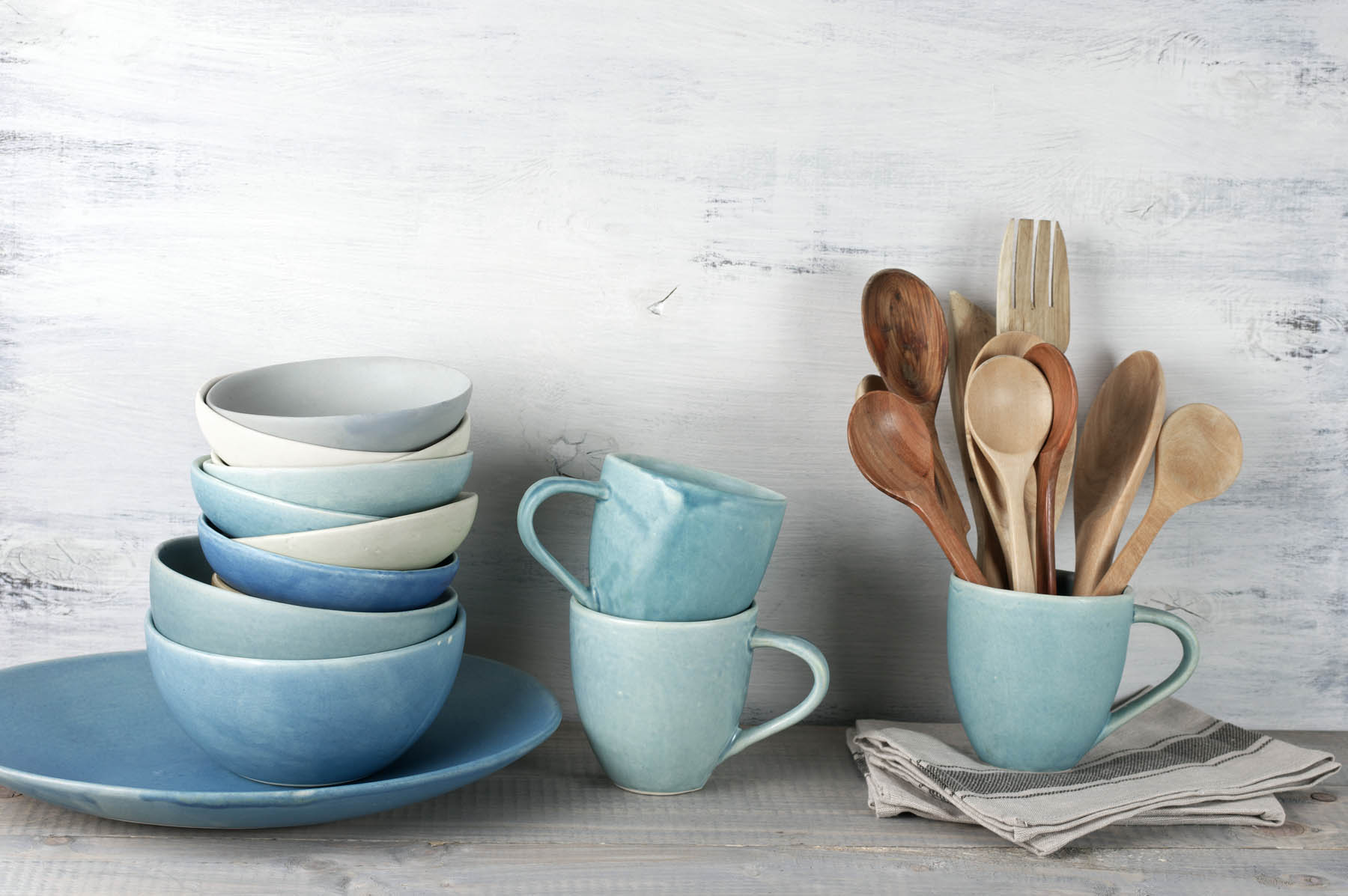
Aim for second-hand goods when searching for those household essentials. Photo: Viako Oy
Most universities will organise a student tutor to answer any questions you may have during your exchange. When you arrive, they should be able to point you in the direction of local second-hand stores or a website, like Viako(Link to another website.) in Helsinki, to purchase inexpensively any furnishings you may need. Likewise, some dedicated student housing for exchange students may have a locked storeroom full of homewares left by previous students. Just ask your housing organisation for the key and pick from the bunch. But be quick, because as always it is first in, best dressed.
In most student accommodation, you need to remember that doors automatically lock when you close them: the outside door of your apartment and the door of your room. So do not leave your keys inside! In every door, you will find a little button that you can move up/down to make sure the door stays open.
Clothing & Footwear
While some Australians may prefer you take your shoes off inside, this rule is universal in Finland. Remember always take off your shoes when entering a Finnish home and leave them by the door. An exception is a fancy party/formal event when women can wear for example heels and men can wear fancy men’s shoes. In winter, especially women may want to carry their fancy shoes to the party where they change from snowshoes to fancy shoes.
If you begin your exchange in the spring semester, you may be tempted to buy cold weather gear before you leave for Finland, but we recommend purchasing suitable clothing upon your arrival as there is a wider selection available at this time of year and you can avoid carrying any extra luggage. A decent pair of snowshoes can help avoid bone-crunching falls. When winter well and truly arrives, remember layers are key, when you think you have enough, put on one more.
Food
If you arrive at the beginning of the spring semester, it will be dark for an extended period of the day, and it may be difficult for you to first navigate your way around your new home. If you are looking for a supermarket, Finland has a number of chains:
- Kesko (K-Market, K-Citymarket, K-Extra and K-Supermarket)
- S-Group (Sale, Alepa, Prisma and S-Market)
- Lidl
Almost every Finn has joined a supermarket loyalty program, and we recommend you should as well to save a whole heap of money during your exchange. Kesko has K-Plussa(Link to another website.) and S-Group has S-Etukortti(Link to another website.).
One of the biggest perks of a Finnish student card is affordable dining at university cafeterias. Regardless of your university, you can hop into a cafeteria and have a full meal for 2.60€. This usually includes a side salad/bread, and you can choose from two to three options, which one is usually vegetarian or vegan. Cafeterias are often open only for lunch, but some locations offer breakfast and dinner in addition to takeaway coffee and baguettes. Many cafeterias serve students also on the weekends. So if you are looking for a cheap eat during your travels in other Finnish cities, just look up the closest cafeteria(Link to another website.) and you are set!

Finns love to bake. Photo: Visit Finland
Finnish delicacies and staples are plenty if you are in the supermarket pick up some Maksalaatikko(Link to another website.), Pinaattiletut(Link to another website.), Viili(Link to another website.) or even Veriletut(Link to another website.). If you have a Finn that is willing to cook for you we suggest you ask for some Poronkäristys(Link to another website.), Kalakeitto(Link to another website.) or Pannukakku(Link to another website.). Studying over Easter do not miss Mämmi(Link to another website.) and at Christmas, fill up on Joulukinkku(Link to another website.). If you are looking something sweet best to try Korvapuusti(Link to another website.) or better yet share a whole Mustikkakukko(Link to another website.), you may even able to pick your own berries. Finally, yet importantly, do not forget the rye bread as it makes everything even better!
Getting Around
Finland has some of the best trains in Europe, and there is only one company, vr.fi. Students travelling with an official university student card receive a discount. The Finnish Transport Agency provides a point-to-point local and long-distance journey planner(Link to another website.) for Finland.
In Finland, local public transport systems are efficient and we recommend getting a student travel card when you arrive because without it just one trip can be quite expensive. You can always buy a travel card at the local bus station, but many municipalities are going online. Public transport smartphone applications for purchasing tickets and timetable are now available in Helsinki(Link to another website.), Turku(Link to another website.), Tampere(Link to another website.) and Oulu(Link to another website.).
For others cities and towns the Waltti nationwide travel card(Link to another website.) is an ideal option for public transport and is available to use in Hämeenlinna, Joensuu, Jyväskylä, Kajaani, Kouvola, Kotka, Kuopio, Lahti, Lappeenranta, Mikkeli, Oulu, Rovaniemi and Vaasa.
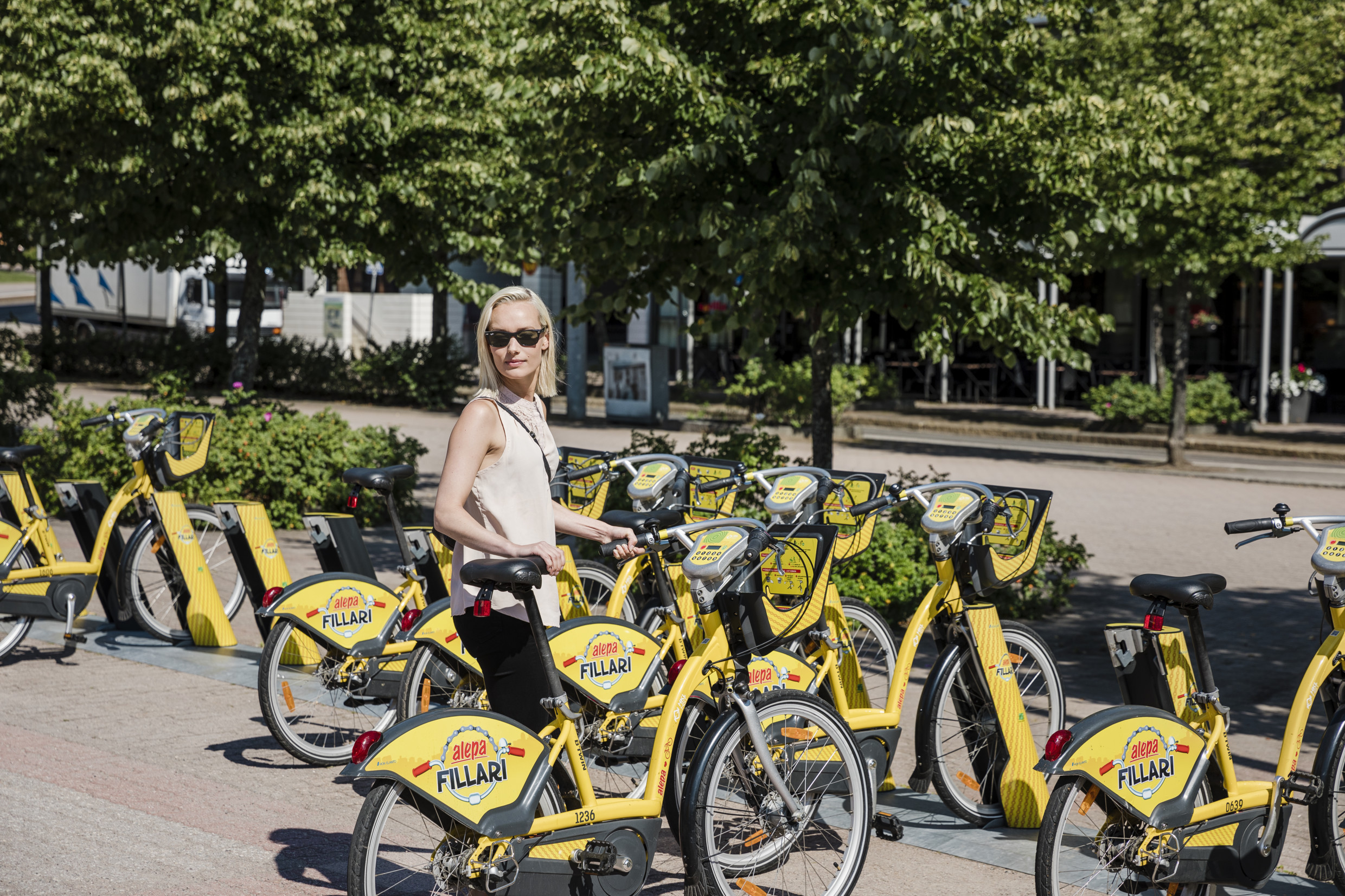
Bike sharing is great way for getting around the city. Photo: City of Helsinki
Shared bicycles schemes are an increasingly popular way of getting around and are available seasonally in most municipalities. Users often receive a significant discount if they register for a daily, weekly or season pass, rather than renting a bike on an individual basis.
An alternative option is to purchase a bike from a second-hand store, in many cases, you can agree upon a price to re-sell you bike back to a store when your exchange ends. While we recommend that you wear a helmet when bicycling for safety, it is not required by law in Finland but lights are vital. When purchasing a lock, avoid the cheaper key locks as they tend to break in the colder weather.
Driving in Finland during winter can be hazardous, and icy roads are common. Winter tyres (either studded or non-studded) are a legal requirement from 1 December to the end of February. Furthermore, the use of headlights and wearing seatbelts at all times is compulsory in Finland. To find out if you are eligible to drive in Finland please visit ajokortti.fi(Link to another website.)
Greetings & Punctuality
When it comes to greetings, Finland is different from some other European countries; kisses on the cheeks do not exist. A handshake is a very common way of saying hello, in formal and informal situations. Even young people might shake hands if they are introduced to one another. Often a smile/nod plus saying hello is enough to be polite. A neutral way of greeting someone, for example in a shop, is "Hei!" (pronounced "hey" in English). Remember Finns keep small talk to a minimum, it may seem like they do not like you, but they really just treasure silence and use their words diligently. If you wish to better understand the Finnish persona we recommend following online Karoliina Korhonen's Finnish Nightmares(Link to another website.) and Joel Willans's Very Finnish Problems(Link to another website.).

It'll take some getting used to. Photo: Finnish Nightmares/Karoliina Korhonen
Finnish people are usually very punctual. If you agree on meeting someone or if an event is set to start at 8pm, it means at 8pm sharp. Arrive in good time and respect other people’s schedules. In addition, some Finnish universities adhere to the academic quarter, a quarter-hour discrepancy between the defined start time for a lecture or lesson and the actual starting time. For instance, if a lecture is scheduled for 10am, the lesson will not commence until 10:15am.
Nitty-gritty
If your university does not provide you with one, you will likely need to purchase a local sim card; they can be bought from stores run by providers like Telia(Link to another website.), Elisa(Link to another website.) and DNA(Link to another website.). If you need to post something back home, find your nearest post-office using the Posti’s Service Point Search(Link to another website.).
In some circumstances, you may be advised to open a Finnish bank account. Opening a personal account is generally fast and simple, just head to the nearest convenient branch of the bank you choose. The most common banks in Finland are Nordea(Link to another website.), OP(Link to another website.) and Danske Bank(Link to another website.). While documentation required varies slightly between banks, exchange students should take with them their passport, student ID, residence permit card and proof of address to open an account.
Health Care and Insurance
Australia and Finland have a Reciprocal Health Care Agreement (RHCA)(Link to another website.), which may cover some of your medical costs in the Finnish public health system. Australian exchange students must have private insurance(Link to another website.) that will cover medical and pharmaceutical expenses to obtain a residence permit. This insurance may be provided on behalf of your home university. To cover any additional medical costs we recommend exchange students purchase travel insurance for their period of study in Finland.
Work Opportunities
Before you arrive in Finland, make sure that you have enough funds for the entire time your studies will take. Australian exchange students may eligible for an OS-HELP(Link to another website.) loan. The opportunity for exchange students to work during their studies is restricted. Exchange students may only work for an average of 25 hours per week during their period of study in Finland. The number of working hours is not restricted on a weekly level. This means that you can adjust your weekly working hours during the academic term, as long as you work for 25 hours a week on average.

Studying in Lapland? The Santa Claus Village is always looking for extra helpers. Photo: Riku Pihlanto/Visit Finland
Language
Your university may offer the chance to join a program that assigns exchange students with Finnish families. We recommend that you get in quick, as this will be an invaluable opportunity to truly experience Finnish culture and importantly broaden your Finnish vocabulary. Finns love when you take the time to learn their glorious language and all universities have Finnish classes for beginners. Below is some survival Finnish for when you arrive.
Phrases
| Good morning! | Hyvää huomenta! |
| Good afternoon! | Hyvää iltapäivää! |
| Good night! | Hyvää yötä! |
| Hello! | Hei! |
| Goodbye! | Näkemiin! |
| Excuse me | Anteeksi |
| Thank you! | Kiitos! |
| You're welcome! | Ole hyvä |
| What time is it? | Mitä kello on? |
| I don’t understand. | En ymmärrä. |
| I love you! | Rakastan sinua! |
| Cheers! | Kippis! |
Academic
| Academic year | lukuvuosi |
| Study guide | opinto-opas |
| Semester | lukukausi |
| Assessment | arviointi |
| Lecture | luento |
| Credit | opintopiste |
| Library | kirjasto |
| Student | opiskelija |
| Degree programme | koulutusohjelma |
| Lecturer | opettaja |
| University | yliopisto |
| University of applied sciences | ammattikorkeakoulu |
Sauna
In public saunas, people normally wear swimsuits, except in swimming halls. Swimming halls have separate saunas for men and women. The only time when men and women go to the sauna together naked is with family members (depending on the family) and with friends (depending on the friends). There is a very good chance you will have a community sauna in your student accommodation. Just pick a time and it is all yours. Therefore, you had better not forget to pack your budgie smugglers!
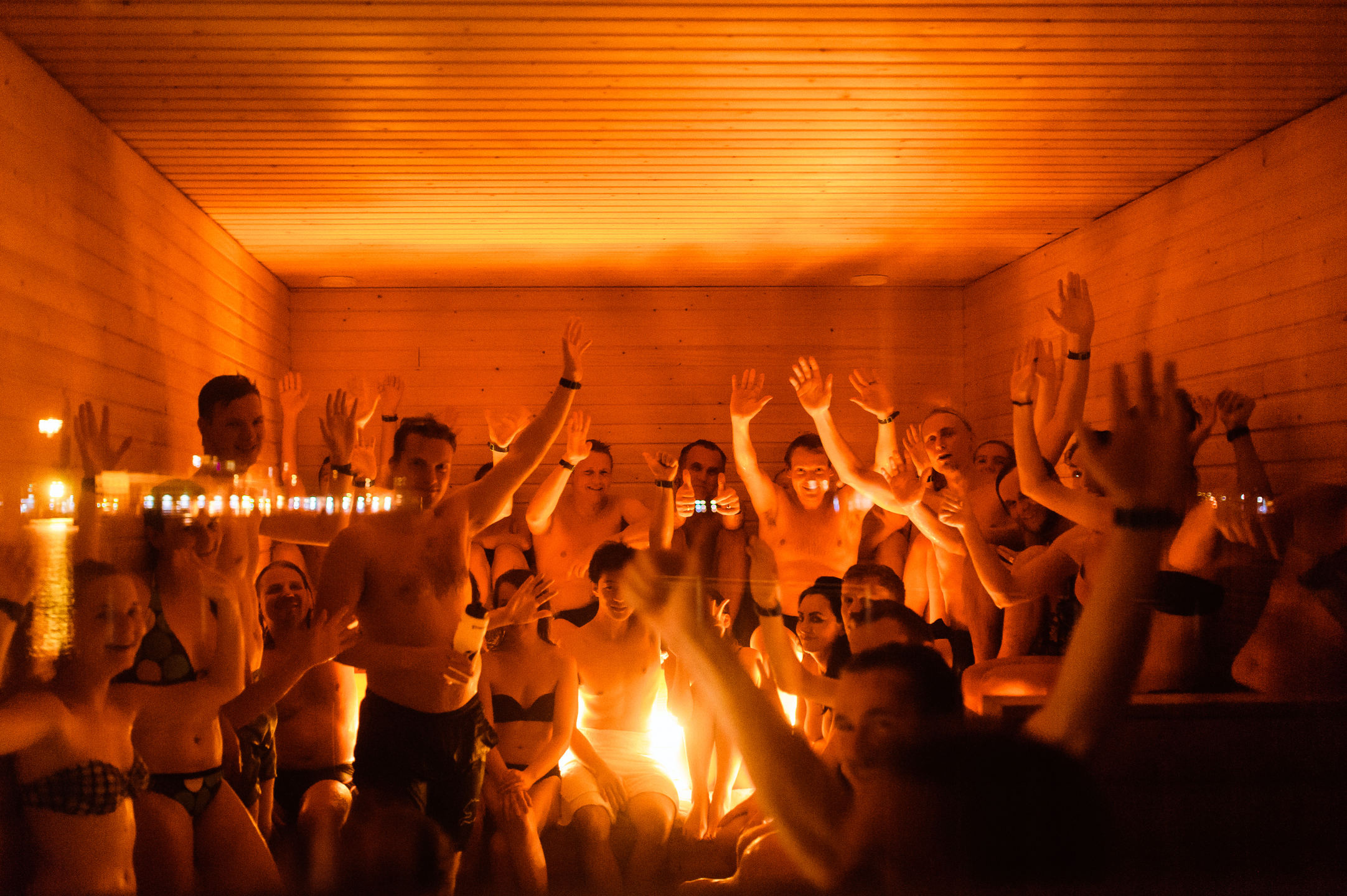
If you get the chance, nothing beats a party in sauna! Photo: Eero Ahanen/Visit Finland
Mökkihöperyys(Link to another website.) is an integral part of the Finnish psyche and often describes your sense of being when you escape the city and head to nature to spend time in your family cottage. Over half a million cottages dot the Finnish countryside. Most often, Finns build the sauna first and the rest follows. If you are lucky enough you could be invited to experience this Finnish tradition, which could also involve a little ice swimming or in the summer a bonfire.
Going Out
You will need an ID when you enter a bar/pub or a nightclub. A driver's licence and passport are valid ID’s. A student card or residence permit are not accepted. Finnish law says you are not allowed to bring your own alcohol to bars or smoke inside. If you need to bring your drinks, you must leave them in the cloakroom. Drinking anything not bought from the premises or smoking on the premises will get you thrown out.
Alcohol & Smoking
In Finland, you must be over the age of 18 to buy beer and cider in normal supermarkets. All of them stop selling alcohol at 9pm (and start again at 9am). Stronger alcoholic beverages are sold exclusively at Alko. You need to be 20 years old to be able to buy strong liquor. Therefore, it is also good to remember your ID if you intend to purchase alcohol!
Smoking is not allowed in public buildings. Also, remember to check the rules in your accommodation, because usually smoking is not allowed. Look for and ask for a designated smoking area.
Recycling
Organic waste (leftover food etc.) is collected separately! Usually every building also has its own bins for paper, glass and metal. "Sekajäte" or "energiajäte" means all other waste that does not have its own bin. Empty batteries can be taken to some grocery stores; they often have small boxes for them.
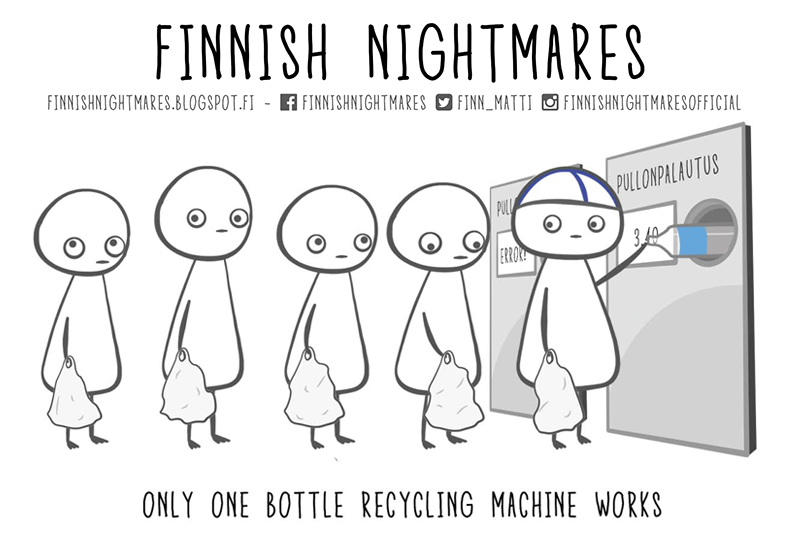
Do not throw away your empty cans and bottles!. Photo: Finnish Nightmares/Karoliina Korhonen
Installed long before Australia’s Return & Earn Scheme, Finland has machines at almost every grocery store for you to return your empty cans and bottles. You will receive a credit in the form of a receipt that can be spent on your groceries or simply converted to cash at the checkout.
Student Life
All students are required to pay a student administration fee of around 50€ to 150€ depending on the institution, but the benefits are life-changing. The fee in large part helps support student associations, which play an important role in Finnish student culture. Student associations at universities take various forms. Some have a niche in a certain hobby or activity, whether it is camping, sports, music, theatre or dancing. Whatever you fancy there is bound to be student association for you and best of all a new group of Finnish friends.
The focus of most student associations concentrates on creating a counterbalance to studying by organising small-scale social events for their members. This may mean trips abroad, visits to companies or museums, attending conventions or holding gatherings and parties. In many ways, joining a student association presents the chance to experience unique student traditions, like Vappu and Sitsits.
Furthermore, as an exchange student, you will be thrust into an environment where you will be meeting new people from all over the world each day. Student organisations associated with ESN Finland (Erasmus Student Network) often emphasise events and activities for exchange students to meet one another.
Activities and Events
Finns love to be one with nature. With Finland’s air quality ranked the cleanest on earth, it is not hard to see why Finns jump at the chance to be outdoors and seek out that next adventure. In Finland, you have the right to roam, for nature is not only wild, it is free for everyone to enjoy, respectfully. The “Everyman’s Rights” grants you the freedom to roam the countryside, forage, fish with a line and rod, and enjoy the recreational use of natural areas.
During your exchange, visit your local library you will not regret it. Finland is renowned as one of the world’s most literate nations. The average Finn makes ten visits to the library per year and borrows 18 items. In Finland, the library sits at the core of any municipality and is much more than the place one can borrow a book, you may even borrow a sewing machine or piece of art. The more modern libraries even host multimedia-equipped public living rooms and even organise outdoor activities.
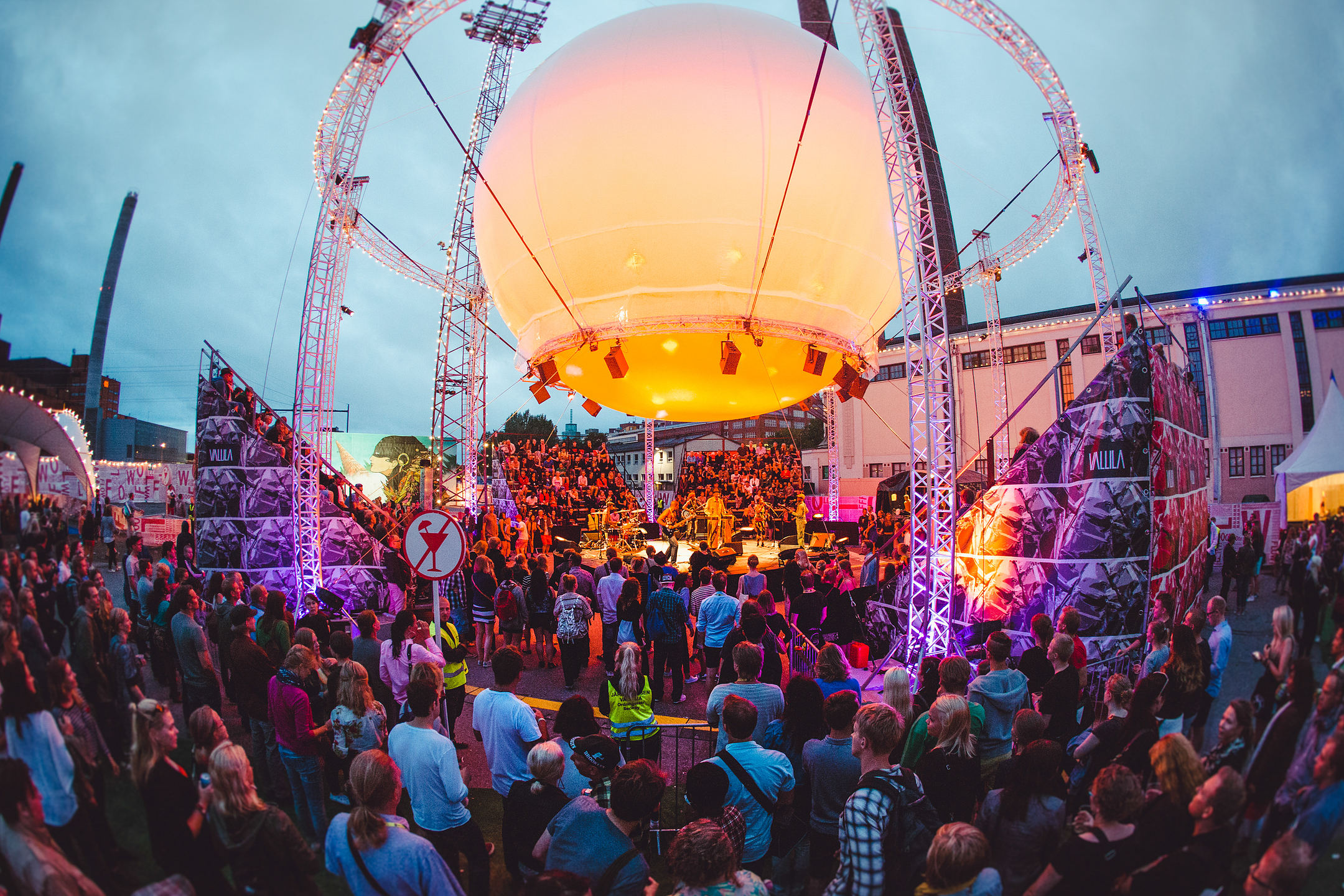
There are festivals for all kinds of music aficionados in Finland. Photo: Jussi Hellstén/Visit Finland
For music lovers, Finland plays host to a number of music festivals each year, with Ruisrock(Link to another website.), Weekend(Link to another website.) and Flow(Link to another website.) arguably some of the biggest. If you are searching for something in particular, Finland Festivals(Link to another website.) is a non-profit organisation and are the experts in finding the right Finnish festival experience for you, be it dance, theatre, literature, visual art or film. Your exchange will be over before you know, so do not miss your chance to visit over some of the 280 museums on offer with a single museum pass(Link to another website.) that costs 69€ for 12 months.
In Finland, ice hockey is king, but through your student associations, there will be plenty of opportunities to participate in a wide range of sports like basketball, volleyball or football (soccer) etc. Furthermore, you may know Finns have invented some crazy sports over the years; so much so, it has inspired the Embassy’s showpiece event right here Australia we call the Finnish Crazy Games.
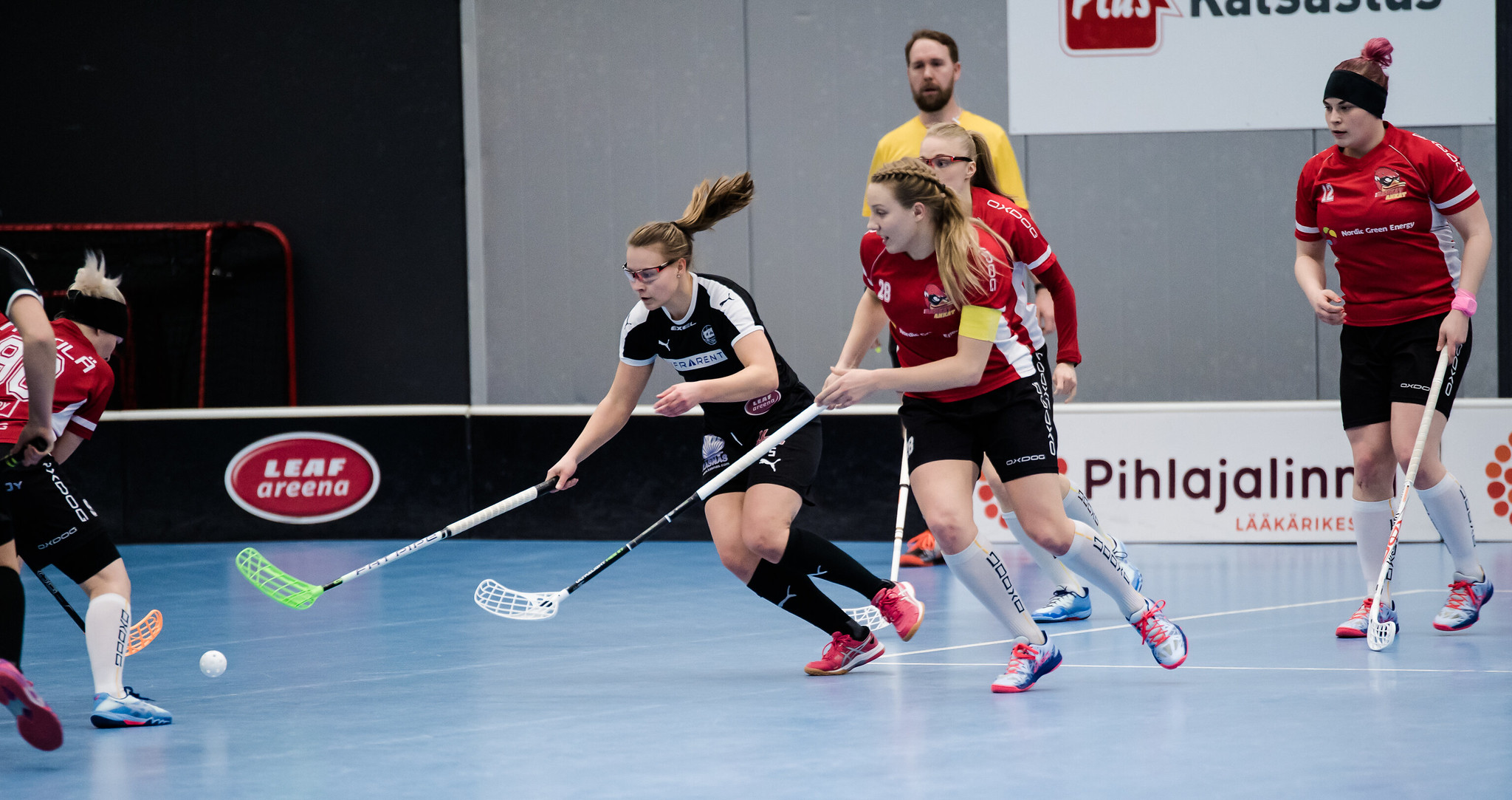
If you're having trouble staying upright on the ice: Photo: Anssi Koskinen/Salibandy.fi
If you want to try your hand at some truly unique sports that Finns love, you could start with Salibandy, or Floorball a type of floor hockey or you can take a swing at Pesäpallo, the national sport of Finland. If that is not up your alley, get a full body workout with a little cross-country skiing, but if spectating is more your style look out for the next race in Finland’s famed rally car circuit. Looking for total comfort, come wintertime you may see Finns sitting scattered around the lake, it may look like they are searching for solace but they are in fact fishing and you should join them, but just preferably not nearby!

